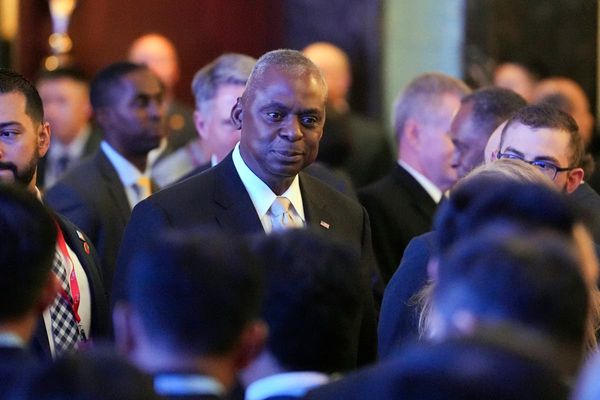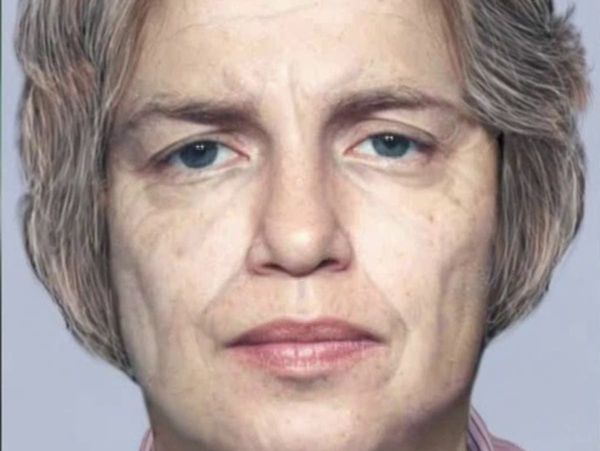SAN DIEGO — Hello, Stanford, goodbye, San Diego State University.
Stanford University has acquired the $2.3 million vinyl record collection of San Diegan Bram Dijkstra, just 11 months after a signed 2020 agreement for the one-of-a-kind collection to go to SDSU’s Love Library imploded.
Numbering more than 8,000 jazz, blues, gospel, soul and reggae discs that span nearly a century, The Dijkstra Black Music Collection will be housed at Stanford’s Archive of Recorded Sound.
“We’re very excited!” Tamar Barzel, who heads Stanford’s Music Library and Archive of Recorded Sound, said Tuesday. “Bram’s collection is a remarkable document of jazz, Black American music and Jamaican reggae, and his curatorial vision is really special in its depth, breadth and scope.”
Stanford’s excitement is shared by Dijkstra, a retired University of California, San Diego art professor, and his wife, literary agent Sandy Dijkstra.
“All’s well that ends well,” the couple — speaking almost in unison — said in a joint interview Monday.
But the collection’s move to Stanford — like the sometimes-acrimonious 2021 exchanges between top SDSU administrators and the Dijkstras that precipitated it — has dismayed some key SDSU faculty members.
“I am devastated and extremely disappointed in San Diego State University’s monumental missed opportunity to bring in this major collection, which is one of the largest, most comprehensive Black music collections in the world,” said Adisa Alkebulan, chair of SDSU’s Department of Africana Studies.
“Our university’s (faculty) Senate last year voted overwhelmingly in support of SDSU acquiring the Dijkstras’ collection. The fact that SDSU simply didn’t want it — I took it personally as an African American,” Alkebulan said.
“It’s a great loss for SDSU,” said Rob Ray, the school’s now-retired special collections and university archives director.
Ray was instrumental in persuading the Dijkstras to let SDSU acquire Bram Dijkstra’s collection, which was then known as the The John Coltrane Memorial Black Music Archive.
In a 2020 San Diego Union-Tribune article, the collection was hailed as “extraordinary” by SDSU’s then-interim library Dean Patrick McCarthy, and as “one of the major music collections in America” by John Szwed, former director of Columbia University’s Center for Jazz Studies emeritus.
“The quality of education at Stanford will improve immeasurably, thanks to this collection, but it’s been lost for San Diego State,” Ray said.
“SDSU ... reneged on the original agreement (with the Dijkstras), a process and decision that faculty, students and staff were excluded from — and never informed of — until it was too late. I’m happy for the Dijkstras and Stanford. But for students, faculty and researchers at SDSU, it’s a really sad tale,” Ray said.
In response to a request for comment on Monday, La Monica Everett-Haynes, SDSU’s associate vice president and chief communications officer, emailed the following statement about Stanford’s acquisition:
“We are incredibly pleased that the collection has found a robust and long-standing sound archive to serve as its home. This is an opportunity to curate and maximize the usage of this diverse and meaningful collection at an organization that has a 60-year history of specializing in the preservation and dissemination of historically and artistically significant sound recordings.”
A variety of reasons have been cited for the disintegration of the acquisition agreement between SDSU and the Dijkstras. In a February 2021 Union-Tribune article, both parties accused each other of deceit and disrespect.
In addition, SDSU said, that the Dijkstras had suddenly presented “new, high-cost requests” regarding the cataloging, staffing and presentation of the collection.
That contention was disputed by Ray and by the Dijkstras. Ray, who retired in 2020, told the Union-Tribune last year that the school’s actions were a “smokescreen” and “B.S.”
Asked Tuesday to respond to some of the new comments made by Ray and Alkebulan, SDSU provided a second statement.
“The SDSU Library was honored to accept Sandy and Bram Dijkstra’s offer in 2020 to bequeath their curated collection to SDSU,” the statement began.
“One year after agreeing to the terms of the signed agreement, the Dijkstras introduced expectations about collection-specific staffing and infrastructure not included in the agreement. While there are a few West Coast universities with this infrastructure, unfortunately the SDSU Library is not home to a sound archive, which involves additional and specialized preservation, archival, and listening spaces, and the university was not in a position to provide these high-cost requests ...
“Our librarians and archivists work actively with SDSU students and faculty every year to ensure that special collections help to promote learning, scholarship and engagement across the university. Again, we are incredibly pleased that the collection has found a robust and long-standing sound archive to serve as its home.”
There appears to be at least one key difference between Stanford and SDSU that led to such markedly different results for Dijkstra’s collection.
At SDSU, the school’s president and other top administrators can nix or approve acquisition agreements if they wish, regardless of the degree of faculty support or opposition. At Stanford, Barzel — the head of the university’s Music Library and Archive of Recorded Sound — has the authority to approve the acquisitions herself.
“The library makes its own decisions about acquisitions,” Barzel said.
“For a collection of this size and scope, we asked the faculty for their input for sure. And we got a great response both from our music department and new African-American Studies department, which is currently in its formation stage. We got very positive feedback from them that informed our decision. Ultimately, we are able to make these types of decisions independently.”
Stanford has placed Dijkstra’s collection in a climate-controlled storage facility as a prelude to cataloging the recordings and making them available, in digitized form, to faculty, researchers and students. The university will hold a celebration and free panel discussion with Dijkstra, moderated by Barzel, in the university’s Cecil H. Green Library at 5:30 p.m. on Feb. 13.
“Recordings are essential primary sources for contemporary music scholarship,” said Stanford Music Department Chair Stephen Hinton.
“As we expand our programmatic offerings in the areas of jazz studies, popular music and ethnomusicology, the Dijkstra Black Music Collection will be an indispensable resource for research and teaching.”
The Dijkstras agreed and said they were delighted Stanford has embraced the collection. Parting with his records was like “losing some limbs,” Bram Dijkstra said.
“For Stanford,” he noted, “probably one of the important elements was that much of my collection plays like new. My records are as pristine now as they were when they came from the recording presses.”
“That’s because Bram wouldn’t let me touch them!” Sandy Dijkstra said.
“I wouldn’t let anybody else touch them,” he responded. “These are the family jewels.”
Columbia professor emeritus Szwed agreed, speaking from his home in Philadelphia.
“Bram’s collection is a great treasure for Stanford and for the state of California,” Szwed said. “It’s a shame it couldn’t have been a treasure for, and in, San Diego.”
———







